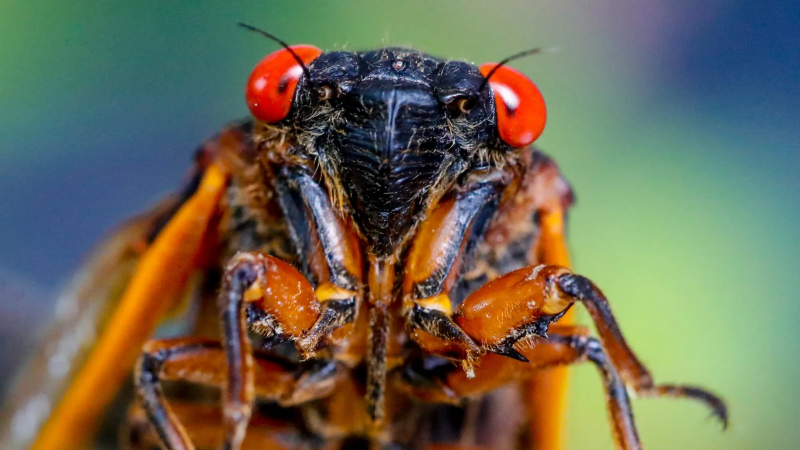What is a cicada? What to know about the loud insects set to take over parts of the US
Every 13 or 17 years, different broods of periodical cicadas emerge from the ground in massive numbers, where they eat, breed and die.
Given they spend more than a dozen years underground, periodical broods don't often emerge in the same year, which makes 2024's "Cicadageddon" more special. These particular cicada broods have not emerged together in 221 years. They are not predicted to emerge at the same time again until 2245.
The 13-year Brood XIX and the 17-year Brood XIII are both periodical cicadas, and are different from the annual cicadas that may emerge in many Eastern U.S. states every summer.
Here's what to know about both annual and periodical cicadas, and the difference between the two.
Beware the cicada killer:2024 broods will need to watch out for this murderous wasp
What is a cicada?
Cicadas are part of a family of more than 3,000 species of sound-producing insects, according to Britannica. They do not bite or sting, and are known for their large eyes and bodies and ability to create very loud noises.
While periodical cicadas like Broods XIX and XIII are famously found in North America where they can emerge in the trillions, cicadas can be found all over the world, Britannica says, mainly in tropical and temperate areas, including in deserts, grasslands and forests.
What is the difference between periodical and annual cicadas?
There are two types of cicadas that are common in Eastern U.S. states and are native to North America: Annual and periodical cicadas. Annual cicadas emerge every year, while periodical cicadas emerge every 13 or 17 years, according to the U.S. Environmental Protection Agency.
Annual cicadas, which are dark green to black with green wing veins, are typically larger than periodical cicadas, which are recognizable for their red eyes, red legs and red wing veins, according to North Carolina State University Extension.
Periodical cicadas emerge earlier, usually in mid-to-late May as opposed to annual cicadas in July and August. According to North Carolina State University Extension, annual cicadas begin mating, "singing conspicuously" and lying eggs about two weeks after they emerge. Their first nymphs will fall to the ground and begin feeding on roots under the soil, and fully-developed nymphs will emerge two years later and molt into adults.
Above ground, periodical cicadas have a similar life cycle, appear in much larger numbers and are much louder. At the end of their season, the next generation of nymphs move underground and remain for either 13 or 17 years.
What is a brood?
According to the University of Connecticut, broods are classified as "all periodical cicadas of the same life cycle type that emerge in a given year."
A brood of cicadas is made up of different species of the insect that have separate evolutionary histories. These species may have joined the brood at different times or from different sources. These different species are lumped together under the brood because they are in the same region and emerge on a common schedule.
The two cicada broods set to emerge this summer are both periodical broods, which the University of Connecticut says fit together "like puzzle pieces, in both time and space."

Broods XIX and XIII: Check out the 2024 cicada map
The two cicada broods will emerge in a combined 17 states across the Southeast and Midwest, with an overlap in parts of Illinois and Iowa. They will emerge once soil eight inches underground reaches 64 degrees, beginning in mid-May and lasting through late June.
The two broods last emerged in 1803, and the next double-emergence is predicted in 2245.
Disclaimer: The copyright of this article belongs to the original author. Reposting this article is solely for the purpose of information dissemination and does not constitute any investment advice. If there is any infringement, please contact us immediately. We will make corrections or deletions as necessary. Thank you.



